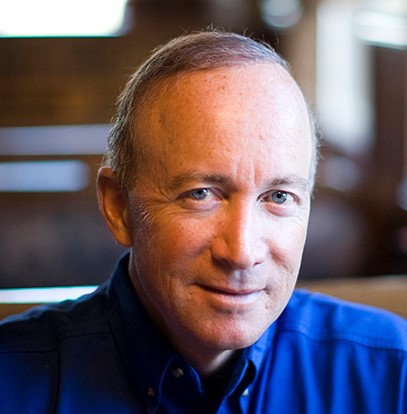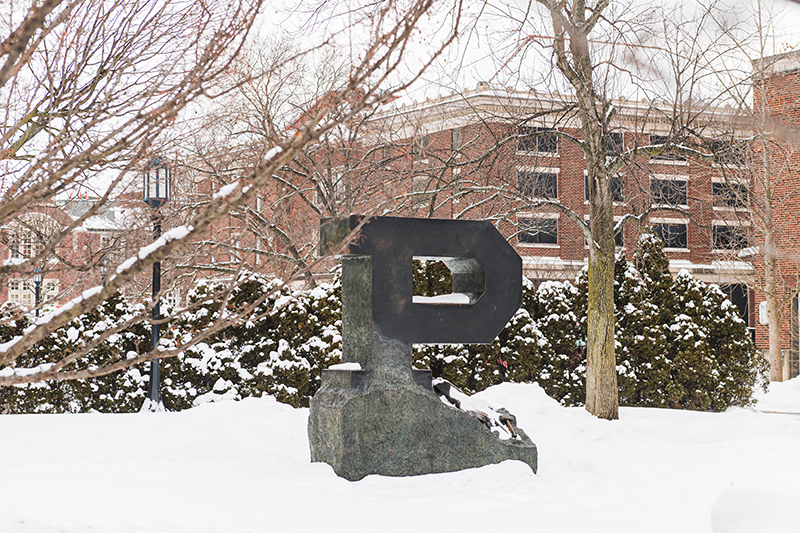
There has been no “pixie dust” or magic bullet that led to Purdue University’s enormous rise in stature over the past decade. According to President Mitch Daniels, its steady growth, academic and research prowess, and ability to meet student needs has simply been the result of focusing on important outcomes while not spending too much time talking about them.
“The one thing we didn’t do is go through one of these interminable, bottoms-up, every-cook-in-the-kitchen strategic planning circuses,” Daniels says. “I’ve seen a lot of time wasted on those in business and sometimes in public life, and certainly I’ve seen it in universities. We think hard about big goals and open the window for others to make suggestions, but try to get to doing a little quicker than higher ed sometimes does.”
Purdue certainly has. It currently sits as the No. 10 public university in the U.S. in Times Higher Education rankings and is near or at the top of several other academic lists. More than just an institution for future engineers, it is annually rated among the most innovative universities by U.S. News and World Report. But where it really shines is in helping students—it has kept tuition rates frozen since 2012-13 and lowered room and board costs during that time. All of that has led to 18% more applications and the largest student body in its history.
“We’re very grateful,” Daniels says, passing credit to those who have attended the university. “It seems that the great work that our graduates do catches the attention of younger people. That’s the best sales tool you’ve got.”
From its Fast Start program for new students to its Purdue Moves mission to elevate its already stout teaching and research reputation, it continually finds ways to improve its brand and reputation.
More President Series stories from UB
- Western New England: What is a new traditional university and why is the vision so vital?
- Muhlenberg: Leading the way as a pioneer for women and her college
- Stetson: Why kindness has been one of the keys to Stetson’s success
- Montana: How higher ed can work for veterans
University Business sat down to learn more about Purdue’s evolution in a conversation with Daniels, the former governor of Indiana who has been leading the charge at this university since 2013.
One of the most notable things about Purdue is the tuition freeze year after year. I’m sure you get asked about it a lot. What’s been the secret to maintaining that level for a decade?
It has to do with alignment. We are a very well-regarded school with very high standards. A lot of people mistake us for a private school or much smaller school. We’re not. We’re a land-grant school and we never lose sight of that. Our mission is to spread higher education as far as we can. These days, that requires keeping it affordable.
At the beginning of this, we had no expectation at all we could hold things where we have, but there have been a few big steps along the way. We never would have made it unless we had a culture in which people look for savings, large and small. We have everybody aligned around this goal, and you wind up surprising yourself, not to mention others. I’d love to tell you that there’s some sort of brilliant strokes going on here, but I don’t see it that way.
Purdue has remained affordable for students while other institutions have struggled to keep tuition and fees low. What are you seeing out there?
Many are now feeling the necessity to do things that maybe in retrospect they certainly could have done some time ago. I fear that some have waited too long. They have let tuition and other costs escalate to the point where unwinding them in time will be very difficult. But you don’t need to hear it from me. Just pick up any journal that covers our sector at this point, and people are forecasting very difficult days. In those kinds of times, things that people didn’t think about before suddenly become thinkable.
Aside from low tuition and fees, what accomplishments are you most proud of in your tenure at Purdue?
I feel very positive about the number of degrees. We always say it’s not how many students we turn away, it’s how many we turn out. That number is going up, particularly of STEM graduates. We decided strategically that this was what our nation and state needed, and we needed to do more of it. We now graduate more engineers than any other school by far. The second is that 70% of our students leave with no debt. For those that have any, it’s very moderate compared to what too many graduates have experienced elsewhere. If you graduate from Purdue, there’s almost a 0% chance you’re going to default and dump the cost on your fellow citizens.
What are the areas you’d like to see Purdue improve on in the next few years?
We’ve got to make sure that we evolve residential education so that it is unquestionably valuable and worth the price. We can’t invite young people here for four years—or these days, I hope a little less—on the same basis we always have. So the way we teach, the flexibility for students to come and go, to do part of the work remotely and come here for the parts that most clearly benefit from in-person instruction and activities, we’ve got to get better at that. Secondly, we want to be leaders in integrating artificial intelligence, augmented reality and new breakthrough technologies—many of which Purdue people are in the vanguard of developing—and apply them to higher ed experiences better than our competition does and quicker. We’ve got a program that we started a year and a half ago called Fast Start. Students can essentially do freshman year for free and finish that degree in three residential years. We’ve got to be very open-minded and more flexible than we’ve historically been.
As a former governor, what do you make of the political divide that exists in the nation and what is missing that could make us better as a nation?
I look at it as I do most things—through the lens of this job and our students. My appropriate role in this is to try to prepare our students and encourage our students to be the citizens that a self-governing country needs, which is to say, people who are sincerely interested and empathetic with folks who are very different than those who didn’t get to college. To be open to other people’s ideas and willing to listen and to recognize that just because somebody is incorrect doesn’t make them a bad person. These are things I hope will spread more widely across society, but the one little thing I can do is try to inculcate those ideas a little more to 40,000 students at a time.
Purdue has remained open throughout the pandemic for in-person learning. Why did you choose that route?
The one-word answer is duty. It’s our job to enable young people to achieve a high-value education at a price they can afford. If there was any way for this place to operate and not set them back an entire year, I thought it was our job to find a way. The big decisions of life are almost never made with the luxury of 100% information. You simply have to add all the data together and make the best good-faith judgment you can. That’s what we did. We recognized that it might not work out and we might have to pull back. But we thought it would be irresponsible to just cower away from the problem and ignore the possibility that if you did all the right things you could do your duty and keep the school open. And happily, that happened.
What important lessons have you learned over the past year or two?
The key is to keep students at the center of the bullseye. All the rest of us are only here because of them. These places cannot be run for the benefit of anybody else. That doesn’t mean you don’t value immensely those who do the teaching, the research or keep the place running. But we’re not an employment agency. We’re not purely a place of scientific inquiry. Our reason for being is the 45,000 young people who are here with us, and we try to make every decision with their interest uppermost.
What are the biggest issues facing higher education?
Number one, proving its value so that people keep coming. That’s nothing new. It’s a more critical issue now than it’s ever been. And number two, modeling the behavior of responsible citizenship. When higher ed looks like an insulated place of homogenous values, many of which are our fellow citizens find hostile to them, it shouldn’t be surprised when the esteem in which it’s held, sinks. We have to live up as a sector to the values that we’re supposed to personify—the open debate and free inquiry. To too many of our fellow citizens, the academy today looks like an alien place that looks down on them and is contemptuous of their life choices.


